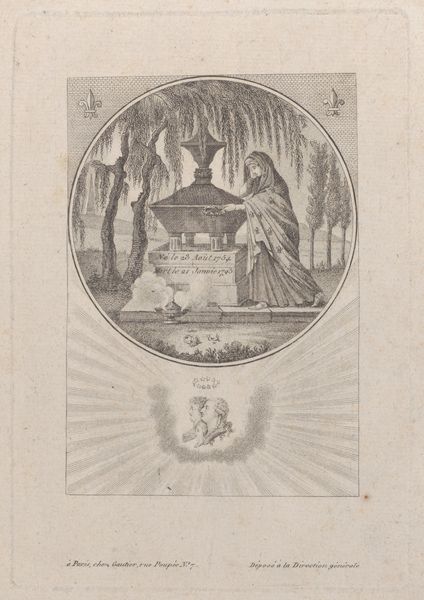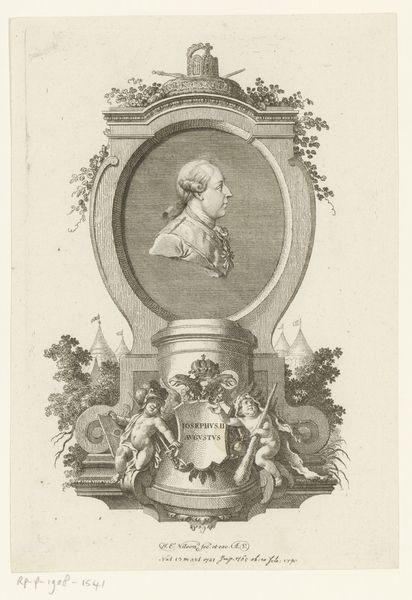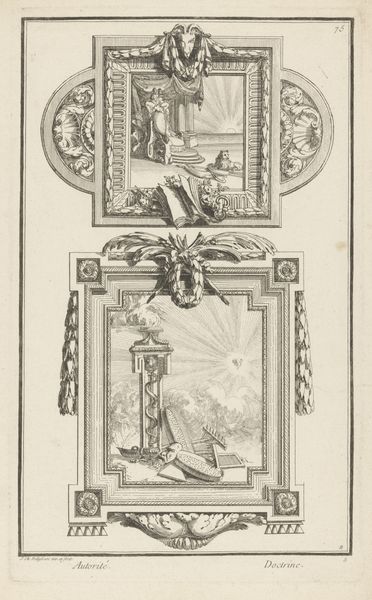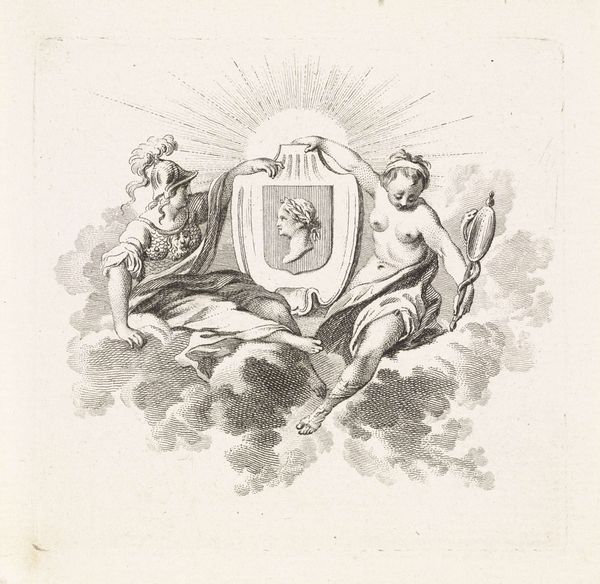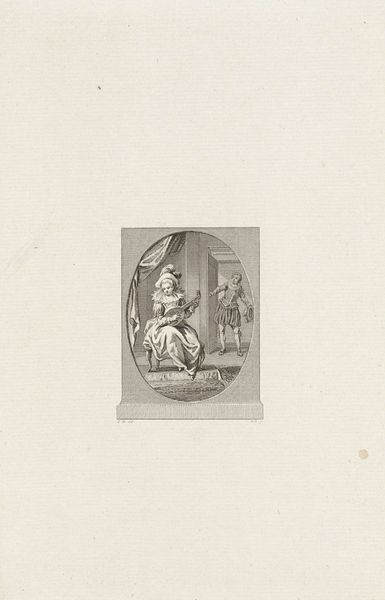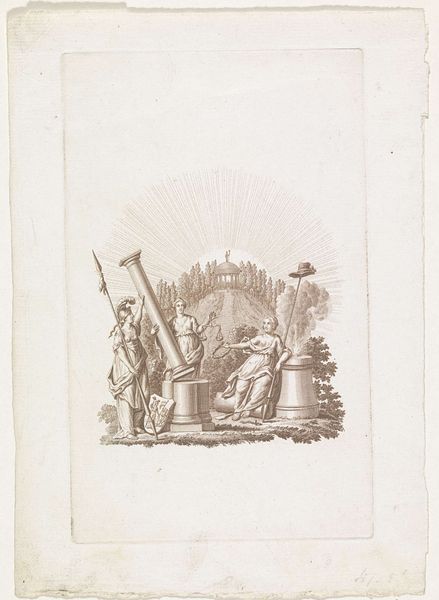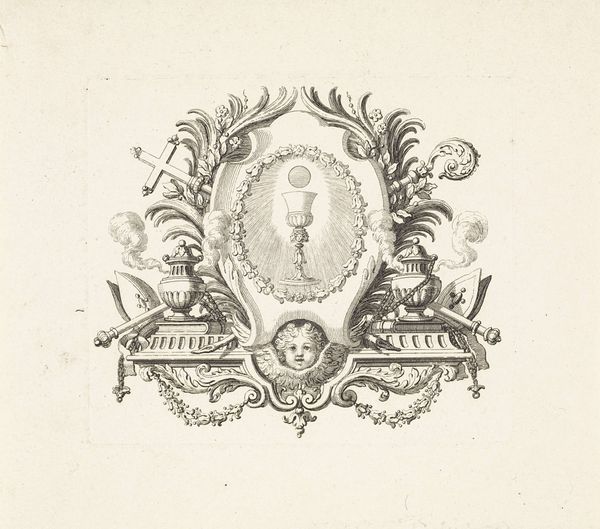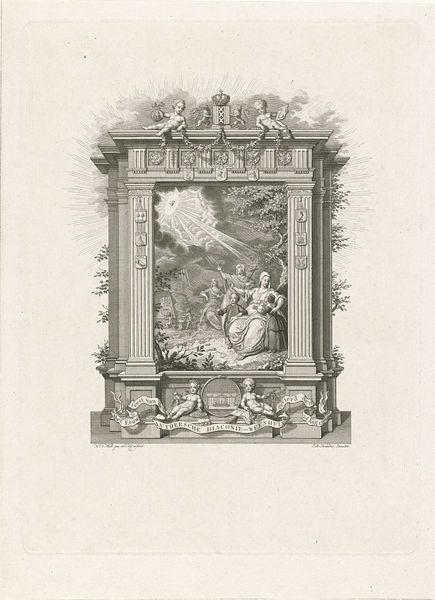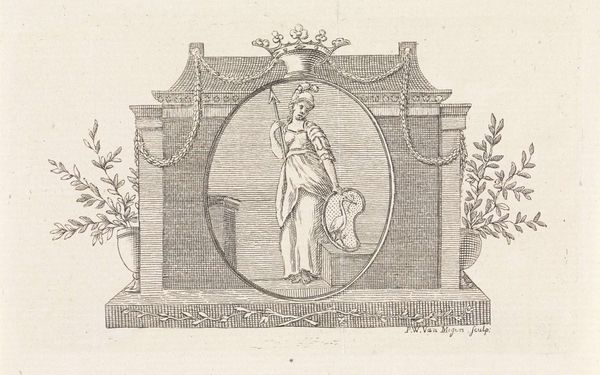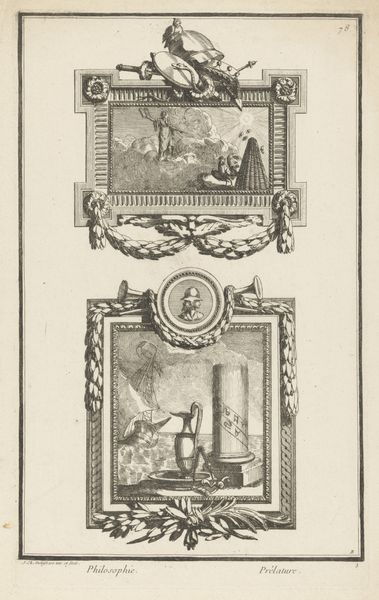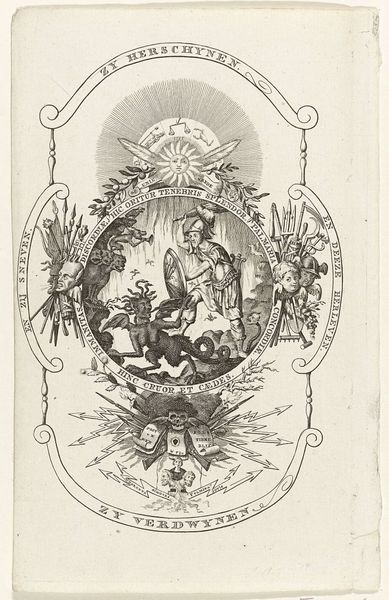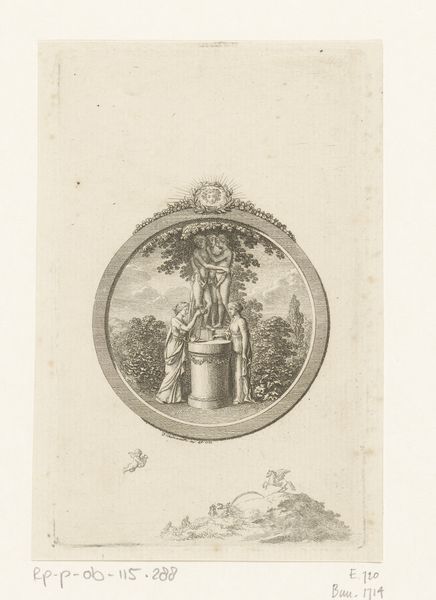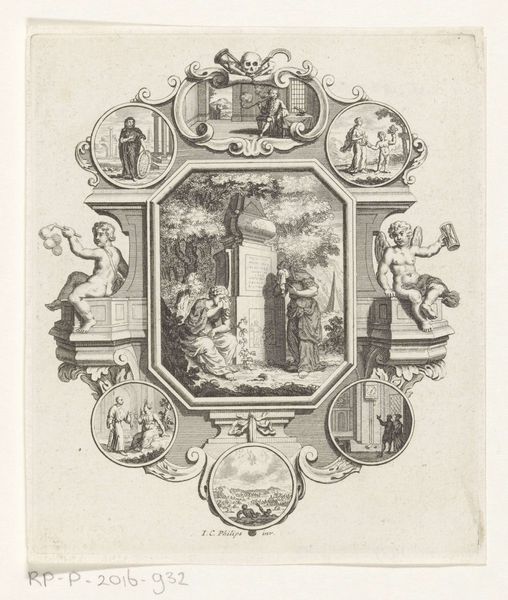
print, engraving
#
portrait
#
neoclacissism
# print
#
old engraving style
#
history-painting
#
engraving
Dimensions: height 229 mm, width 148 mm
Copyright: Rijks Museum: Open Domain
Editor: This is "Gedenkteken voor Petrus Pijpers," a 1789 engraving by Theodoor Koning, currently housed at the Rijksmuseum. I'm struck by the monumentality conveyed through such fine lines. What compositional elements draw your attention, and what is your reading of the symbolism used? Curator: Observe the clarity of line and form, emblematic of Neoclassical aesthetics. The severe profile, encased within a circular frame, evokes classical cameos. The symmetrical arrangement of the objects atop the monument—note the lyre juxtaposed with what appears to be an oil lamp—suggest a harmony between artistic pursuits and enlightenment. The radiating lines above might represent intellectual illumination. Do you notice the books scattered at the base? Editor: Yes, they seem deliberately placed. Is there significance to their disarray? Curator: Consider the composition. The ordered structure of the monument is offset by the scattered books and foliage. This might represent the messy reality of knowledge acquisition, or perhaps a transition from classical order towards the burgeoning Romantic sensibilities that would soon follow. Also note, in comparison, the inscription's ordered, geometrical layout. It reinforces this composition as something of structural balance. What, then, does that equilibrium evoke? Editor: I suppose that Koning's intention was to represent order over disorder. Curator: The composition invites contemplation on themes of knowledge, memory, and the delicate balance between intellect and inspiration. It’s not merely representational; the formal qualities themselves convey meaning. Editor: So, by looking at the elements present on the page, their texture, and their arrangement, we're able to understand the intention of the engraving without relying solely on historical context. Fascinating! Curator: Precisely. By carefully analyzing the intrinsic properties of the work, we can extract a wealth of meaning. It's a rewarding, albeit rigorous, approach.
Comments
No comments
Be the first to comment and join the conversation on the ultimate creative platform.
